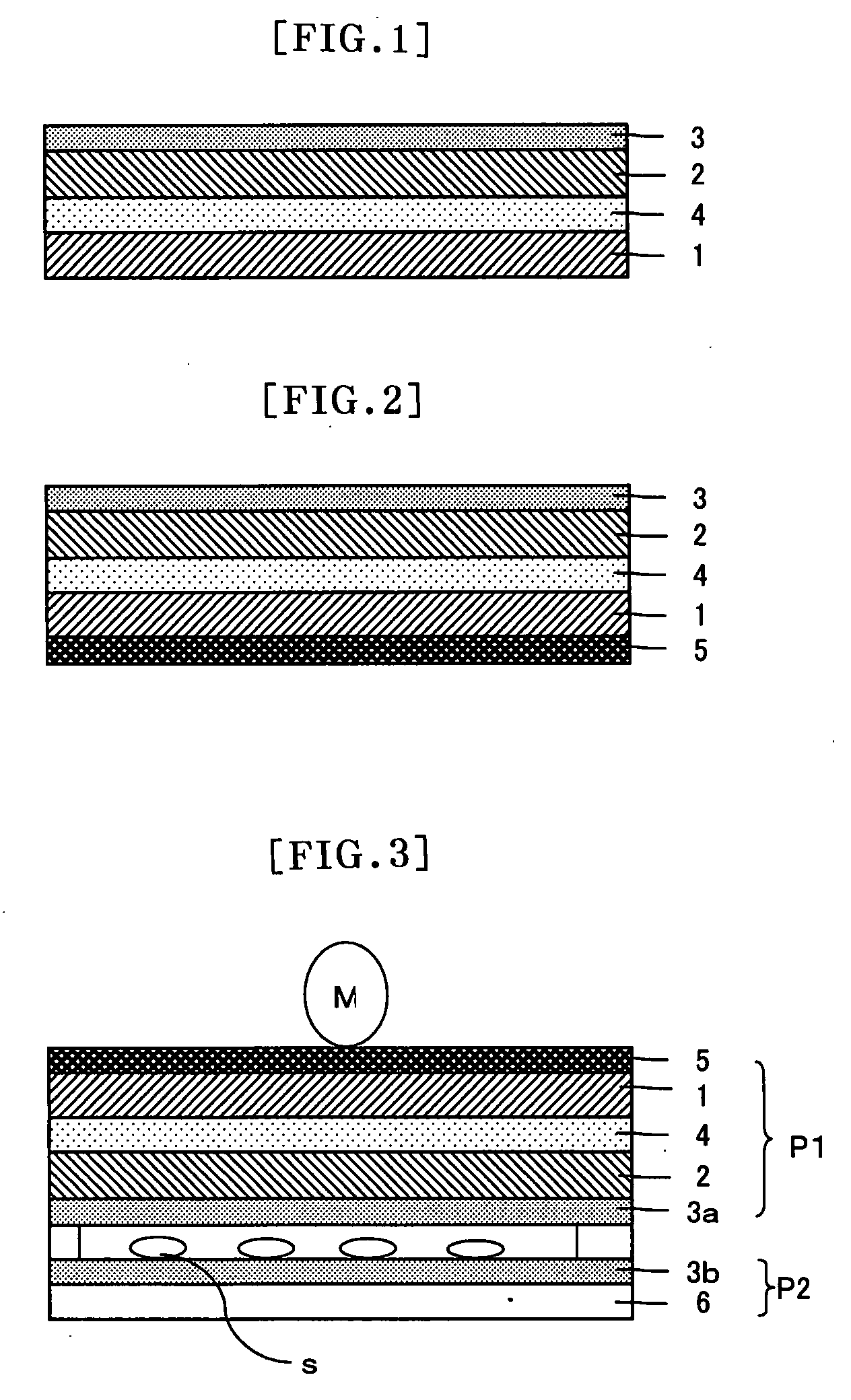Electrically-Conductive Laminated Film, Touch Panel Electrode Plate, Touch Panel, and Pressure-Sensitive Adhesive for Use in Electrically-Conductive Laminated Film
a technology of laminated film and electrically conductive material, which is applied in the direction of conductive layers on insulating supports, instruments, other domestic objects, etc., can solve the problems of increasing the total thickness of the electrically conductive laminated film, increasing the number of processes, etc., and achieves less contribute to adhesive performance, high glass transition point, and high solubility parameter
- Summary
- Abstract
- Description
- Claims
- Application Information
AI Technical Summary
Benefits of technology
Problems solved by technology
Method used
Image
Examples
example 1
(Preparation of Acrylic Polymer)
[0082]Five parts of methyl acrylate, 93 parts of n-butyl acrylate, 2 parts of acrylic acid, and 0.1 parts of 2,2′-azobisisobutyronitrile were added to ethyl acetate in a reactor vessel equipped with a cooling tube, a nitrogen introducing tube, a thermometer, and a stirrer. The mixture was adjusted to have a solids content of 30% by weight, and after substitution with nitrogen gas, the mixture was heated to 55° C. and subjected to a polymerization reaction for 15 hours to give a solution of an acrylic polymer with a weight average molecular weight of 1,800,000.
(Preparation of Acrylic Pressure-Sensitive Adhesive)
[0083]Based on 100 parts of the solid of the acrylic polymer, 0.1 parts of trimethylolpropanetolylene diisocyanate for serving as a crosslinking agent and 0.1 parts of 3-glycidoxypropyltrimethoxysilane for serving as a silane coupling agent were added to the acrylic polymer solution and uniformly mixed to form an acrylic pressure-sensitive adhes...
PUM
| Property | Measurement | Unit |
|---|---|---|
| Percent by mass | aaaaa | aaaaa |
| Percent by mass | aaaaa | aaaaa |
| Percent by mass | aaaaa | aaaaa |
Abstract
Description
Claims
Application Information
 Login to View More
Login to View More - R&D
- Intellectual Property
- Life Sciences
- Materials
- Tech Scout
- Unparalleled Data Quality
- Higher Quality Content
- 60% Fewer Hallucinations
Browse by: Latest US Patents, China's latest patents, Technical Efficacy Thesaurus, Application Domain, Technology Topic, Popular Technical Reports.
© 2025 PatSnap. All rights reserved.Legal|Privacy policy|Modern Slavery Act Transparency Statement|Sitemap|About US| Contact US: help@patsnap.com


